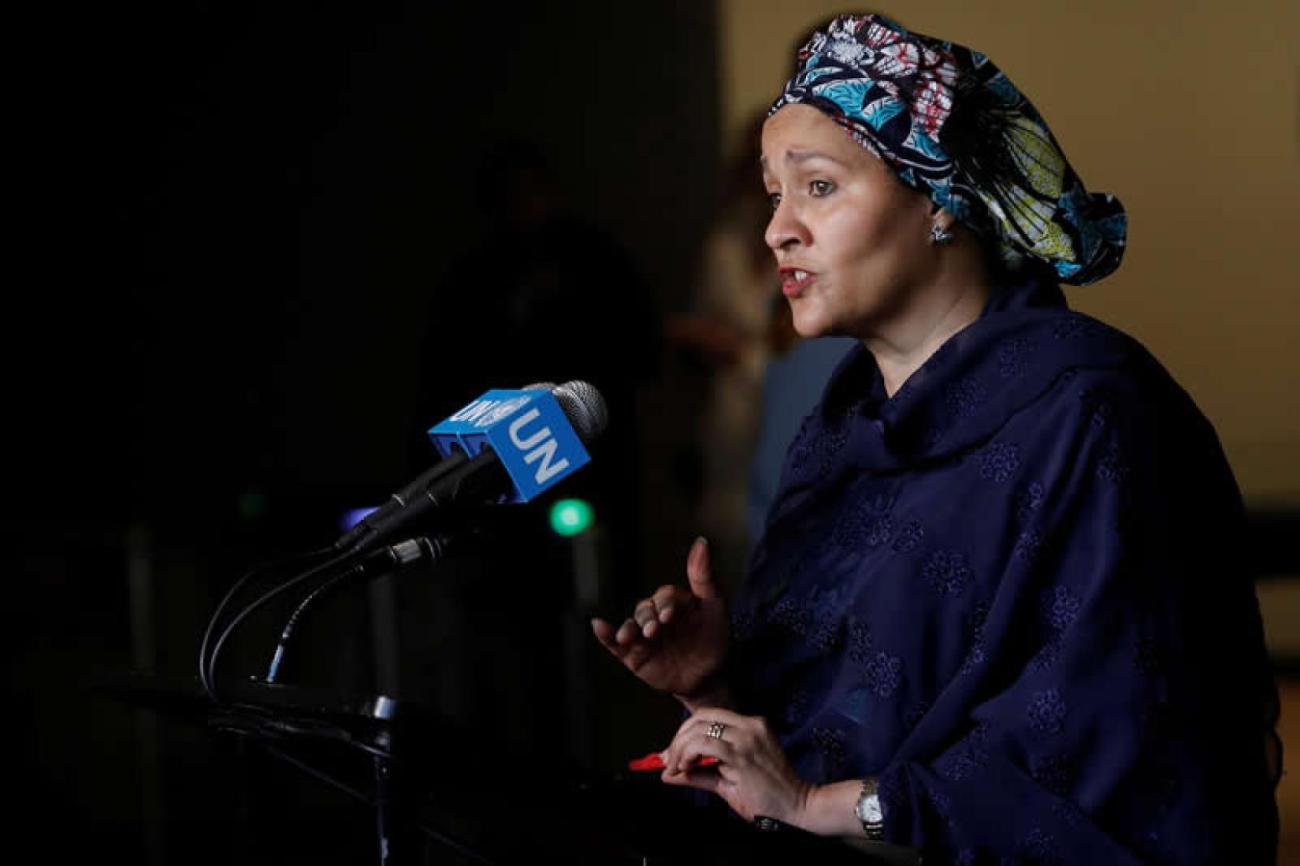Getting governments organised to deliver on the SDGs

The SDGs call for governments that listen to the people and engage them in decision-making, says UN Deputy Secretary General Amina J. Mohammed.
Excellencies, Ladies and Gentlemen, I thank the OECD for organising this event along with the Governments of Sweden and Mexico, the African Peer Review Mechanism and the Department for Economic and Social Affairs. “Getting governments organized to deliver on the SDGs” is essential for implementing the 2030 Agenda.
Citizens around the world increasingly demand greater and more equitable access to better quality public services. They want responsive and inclusive public institutions with the capacity to deliver services efficiently and equitably. The 2030 Agenda is clear that governments are responsible for delivering. But to do that, governance needs to change profoundly. The SDGs call for governments that listen to the people and engage them in decision-making; governments that mobilize all actors around the SDGs; governments that ensure that institutions are effective, accountable and inclusive. This is reflected in Goal 16 and is critical for the realization of every single Goal. An important condition for implementing the 2030 Agenda is to ensure that all parts of Government adopt the SDGs as an overarching objective – in other words, to adopt a “whole-of-Government” approach.
To this end, some countries have requested sectoral and other ministries to identify their responsibilities regarding specific targets, for example, China, Finland, Mexico, Norway and Sweden. In some countries, they are expected to adjust their plans and strategies to implement the SDGs. At the same time, the various government institutions need to come together to develop and implement integrated policies. Recognizing synergies and possibletradeoffss between Goals and targets will make it much easier to realize the SDGs. The 2016 HLPF showed that many countries are grappling with the challenge of developing such integrated policies – 25 years after the first Rio conference initiated this concept.
Ladies and Gentlemen, The voluntary national reviews are showing that many Member States are devoting considerable efforts to adapt their institutional frameworks for implementing the SDGs. Few tasks are more important for the effective functioning of government than leadership and coordination from the top of the executive branch. When the centre of government functions effectively, collective expertise from across the public sector can be mobilized and brought to bear on the most pressing decisions confronting a country. Among the first steps taken by many countries has been the creation of inter-ministerial committees or commissions to spearhead or coordinate implementation. In quite a few countries, such committees are led or coordinated by the Prime Minister’s or President’s office. Such high-level engagement is key to keeping the momentum on implementation.
But, because the 2030 Agenda is so ambitious, it is essential that other key institutions are engaged in implementation, including the private sector and civil society at large. Rallying all actors will also ensure that the implementation of the SDGs remains a priority despite political changes. Successful implementation will also depend to a great degree on local authority actions.
A number of countries have been working to engage local authorities in implementing the SDGs. The UN Committee of Experts on Public Administration has called for developing local 2030 Agendas. It has noted the need to move away from top down relationships and, instead, ensure that central and local governments work as partners. And the resources and capacities of local governments need to be commensurate with their responsibilities.
The 2030 Agenda also highlights the role of parliaments in translating the goals into concrete actions and keeping implementation under review. In short, the depth and ambition of the SDGs call for the concerted and coordinated efforts of the entire political world, as well as civil society and the private sector. Partnership has to be a byword and engagement has to go beyond “Governments decide and stakeholders implement”. In conclusion, it is essential that public institutions embrace the Goals and principles of the 2030 Agenda.
That means a focus on people and a commitment to leave no one behind. No one is too hard to reach. I am convinced that governments, public institutions and the men and women who serve within them will work out how best governments can be organized to deliver on the SDGs. But this will only happen if it is driven by visionary and committed public leadership, adequate resources and capacity and the exchange of lessons learned. That is why we are here today.
I thank you for your attention and wish you a productive meeting.

















